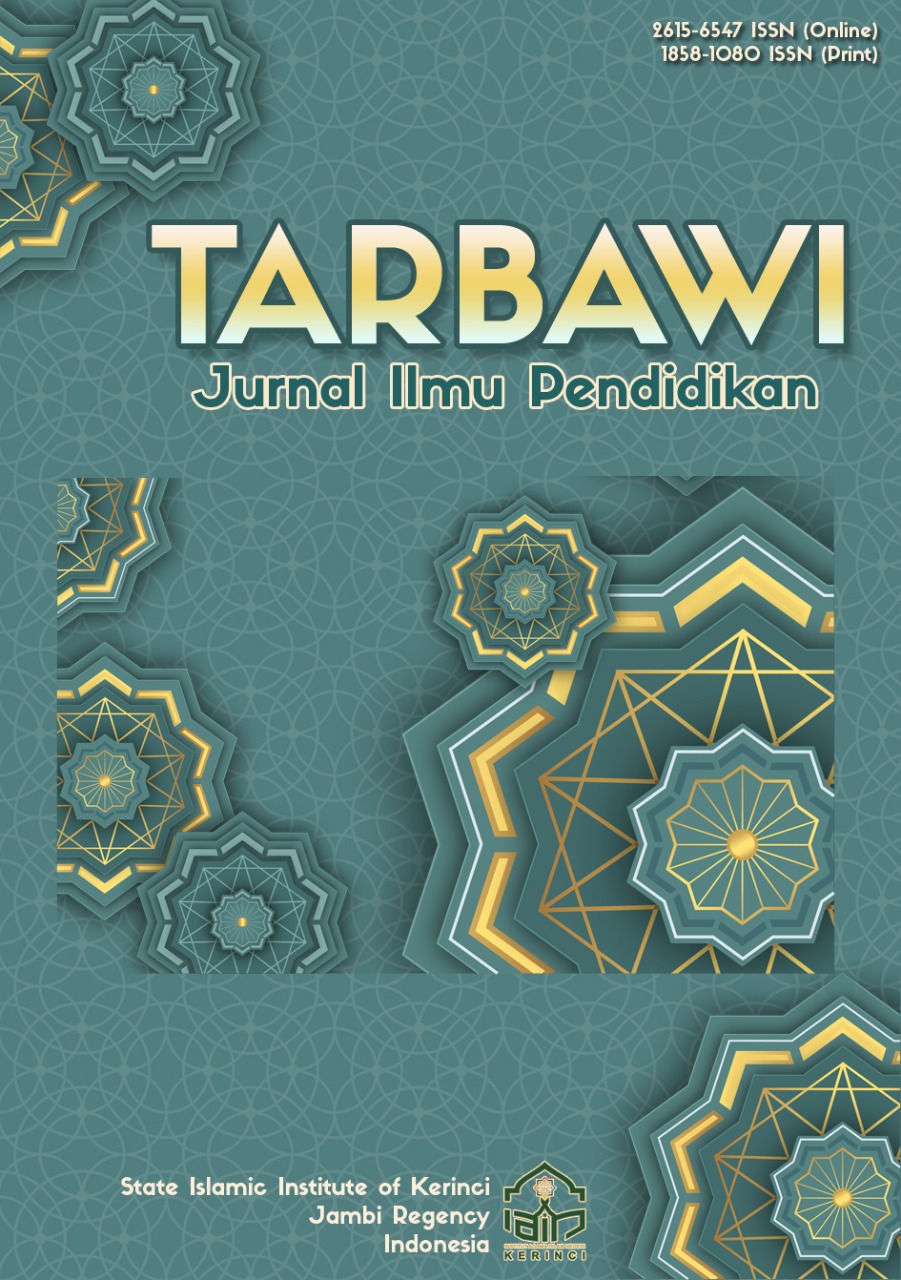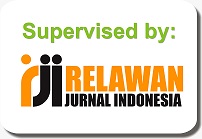The Influence of Teacher Performance, Competence, and Motivation in Improving the Quality of Education in Islamic Educational Institutions
An Analysis with the Smart PLS Method
DOI:
https://doi.org/10.32939/tarbawi.v21i1.4475Keywords:
Teacher Competence, Teacher Performance, Work Motivation, Managerial Strategy, Education QualityAbstract
This study aims to explore the influence of competence, work motivation, and managerial strategies on teacher performance and their impact on the quality of education in Islamic educational institutions. The focus of the research is directed at integrated Islamic madrassas and schools, which are committed to maintaining the quality of education amid limited resources. The Partial Least Squares-Structural Equation Modeling (PLS-SEM) method was used to analyze the causal relationship between these variables, with data obtained through surveys from teachers in several Islamic educational institutions. The results of the study show that teacher competence has a significant effect on teaching performance, which ultimately improves the quality of education. In addition, work motivation plays an important mediating role, where continuous career development can maintain teacher commitment. Managerial strategies implemented by school leaders also contribute positively to increasing productivity and teacher focus in teaching. This study concludes that the combination of competence, motivation, and adequate managerial support is a key factor in improving teacher performance and education quality in Islamic educational institutions. This finding provides recommendations for managers of Islamic educational institutions to focus on developing human resources to achieve optimal quality of education
Downloads
References
Abdullah, A. S., Alqahtani, M., & Al-Madani, F. M. (2021). The impact of motivation and career development on teachers' productivity in Islamic educational institutions. International Journal of Educational Management, 35(4), 524-537. https://doi.org/10.1108/IJEM-11-2019-0412
Akiba, M., LeTendre, G. K., & Scribner, J. P. (2007). Teacher quality, opportunity gap, and national achievement in 46 countries. Educational Researcher, 36(7), 369–387. https://doi.org/10.3102/0013189X07308739
Alam, M. I. (2018). The integration of Islamic values in school systems. Journal of Islamic Education, 12(2), 45–63.
Alharbi, S. M. (2021). Enhancing teacher effectiveness in Islamic education: The role of professional development and resources. Journal of Islamic Studies and Culture, 9(2), 11-20. https://doi.org/10.15640/jisc.v9n2a2
Al-Mansoori, S. A., & Kunasekaran, P. (2022). Structural equation modeling on factors influencing teaching quality in religious schools. Educational Research and Reviews, 17(3), 63-73. https://doi.org/10.5897/ERR2021.4134
Bryk, A. S., & Schneider, B. (2002). Trust in schools: A core resource for improvement. Russell Sage Foundation.
Bush, T., & Glover, D. (2014). School leadership models: What do we know? Educational Management Administration & Leadership, 42(5), 711–727. https://doi.org/10.1177/1741143214535744
Cohen, J. (1988). Statistical power analysis for the behavioral sciences (2nd ed.). Routledge.
Darling-Hammond, L. (2000). Teacher quality and student achievement: A review of state policy evidence. Education Policy Analysis Archives, 8(1), 1–44. https://doi.org/10.14507/epaa.v8n1.2000
Deci, E. L., & Ryan, R. M. (2000). Intrinsic and extrinsic motivations: Classic definitions and new directions. Contemporary Educational Psychology, 25(1), 54–67. https://doi.org/10.1006/ceps.1999.1020
Epstein, J. L. (2018). School, family, and community partnerships: Preparing educators and improving schools (2nd ed.). Routledge. https://doi.org/10.4324/9780429495713
Fenstermacher, G. D., & Richardson, V. (2005). On making determinations of quality in teaching. Teachers College Record, 107(1), 186–213. https://doi.org/10.1111/j.1467-9620.2005.00462.x
Fullan, M. (2007). The new meaning of educational change (4th ed.). Routledge. https://doi.org/10.4324/9780203887332
Guskey, T. R. (2002). Professional development and teacher change. Teachers and Teaching: Theory and Practice, 8(3), 381–391. https://doi.org/10.1080/135406002100000512
Hair, J. F., Hult, G. T. M., Ringle, C. M., & Sarstedt, M. (2021). A primer on partial least squares structural equation modeling (PLS-SEM). Sage Publications.
Halstead, J. M. (2004). An Islamic concept of education. Comparative Education, 40(4), 517–529. https://doi.org/10.1080/0305006042000284510
Hanushek, E. A., & Rivkin, S. G. (2010). Generalizations about using value-added measures of teacher quality. American Economic Review, 100(2), 267–271. https://doi.org/10.1257/aer.100.2.267
Hattie, J. (2009). Visible learning: A synthesis of over 800 meta-analyses relating to achievement. Routledge. https://doi.org/10.4324/9780203887332
Henseler, J., Ringle, C. M., & Sarstedt, M. (2015). A new criterion for assessing discriminant validity in variance-based structural equation modeling. Journal of the Academy of Marketing Science, 43(1), 115-135. https://doi.org/10.1007/s11747-014-0403-8
Hoy, W. K., Tarter, C. J., & Kottkamp, R. B. (1991). Open schools/healthy schools: Measuring organizational climate. SAGE Publications.
Kock, N. (2018). WarpPLS user manual: Version 6.0. ScriptWarp Systems.
Kusuma, H., Rahmawati, A., & Setiawan, A. (2022). Examining factors influencing teacher performance in Islamic boarding schools using PLS-SEM. Journal of Islamic Education, 4(1), 85-98. https://doi.org/10.3923/jie.2022.85.98
Leithwood, K., & Jantzi, D. (2005). A review of transformational school leadership research 1996–2005. Leadership and Policy in Schools, 4(3), 177–199. https://doi.org/10.1080/15700760500244769
Mortimore, P., Sammons, P., Stoll, L., Lewis, D., & Ecob, R. (1988). School matters: The junior years. Open Books.
Robinson, V. M. J., Lloyd, C. A., & Rowe, K. J. (2008). The impact of leadership on student outcomes: An analysis of the differential effects of leadership types. Educational Administration Quarterly, 44(5), 635-674. https://doi.org/10.1177/0013161X08321509
Ryan, R. M., & Deci, E. L. (2000). Intrinsic and extrinsic motivations: Classic definitions and new directions. Contemporary Educational Psychology, 25(1), 54-67. https://doi.org/10.1006/ceps.1999.1020
Shulman, L. S. (1986). Those who understand: Knowledge growth in teaching. Educational Researcher, 15(2), 4-14. https://doi.org/10.3102/0013189X015002004
Skaalvik, E. M., & Skaalvik, S. (2014). Teacher self-efficacy and perceived autonomy: Relations with teacher engagement, job satisfaction, and emotional exhaustion. Psychological Reports, 114(1), 68-77. https://doi.org/10.2466/14.02.PR0.114k14w0
Downloads
Published
Issue
Section
License
Copyright (c) 2025 Tri wahyudi Ramdhan, Yuldashev Azim Abdurakhmonovich, Achmad Yusuf

This work is licensed under a Creative Commons Attribution-ShareAlike 4.0 International License.









